Kitchen island depth has become a centerpiece of modern kitchen design, offering both style and functionality. It’s a versatile space that can serve multiple purposes, from food preparation to casual dining and storage. When designing and decorating a kitchen island, thoughtful consideration of its depth is crucial to ensure optimal functionality and aesthetics. This comprehensive guide will delve into the various aspects of kitchen island depth, providing insights and tips for creating a well-balanced and efficient kitchen layout.
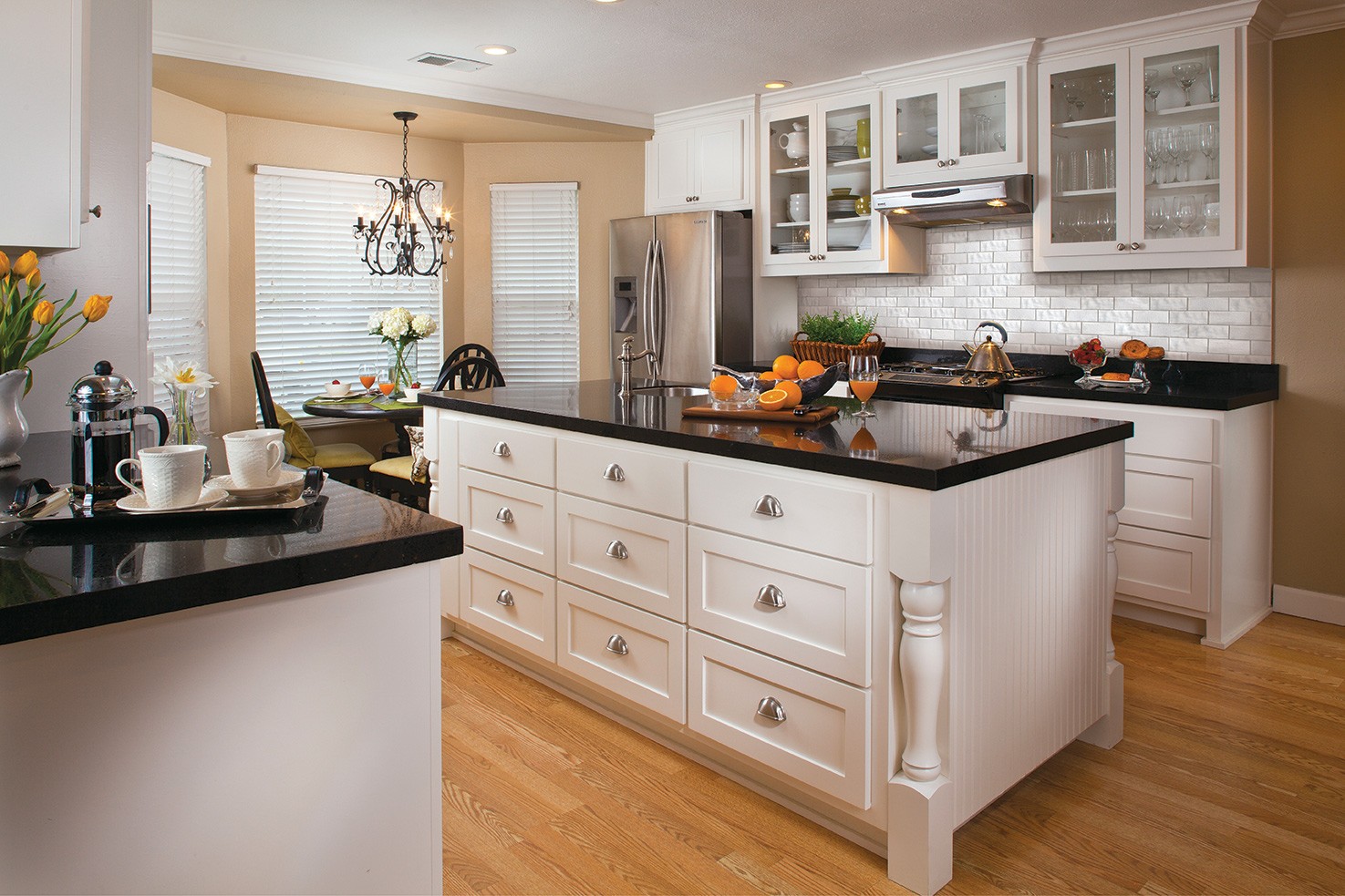
Understanding Kitchen Island Depth
- Standard Depth: The standard depth for a kitchen island typically ranges from 24 to 36 inches (61 to 91 cm). This depth allows for comfortable access and usability without impeding traffic flow in the kitchen.
- Factors Influencing Depth: Several factors influence the ideal depth of a kitchen island, including kitchen layout, intended use, available space, and personal preferences. Deeper islands offer more countertop space and storage but require careful planning to maintain functionality.
Planning Your Kitchen Island
- Assessing Available Space: Measure the available space in your kitchen to determine the maximum dimensions for your island. Consider clearance zones around the island to ensure ease of movement and accessibility.
- Determining Island Functions: Decide how you intend to use the kitchen island. Will it primarily serve as a food preparation area, a dining space, or a combination of both? This will influence the depth and layout of the island.
Design Considerations
- Traffic Flow: Ensure there is adequate space (typically 36 to 48 inches or 91 to 122 cm) between the island and surrounding countertops or walls to accommodate multiple users and prevent congestion.
- Ergonomics: Opt for a depth that allows for comfortable reach across the island’s surface. Consider the height of appliances and cabinets installed within the island to minimize strain during food preparation.
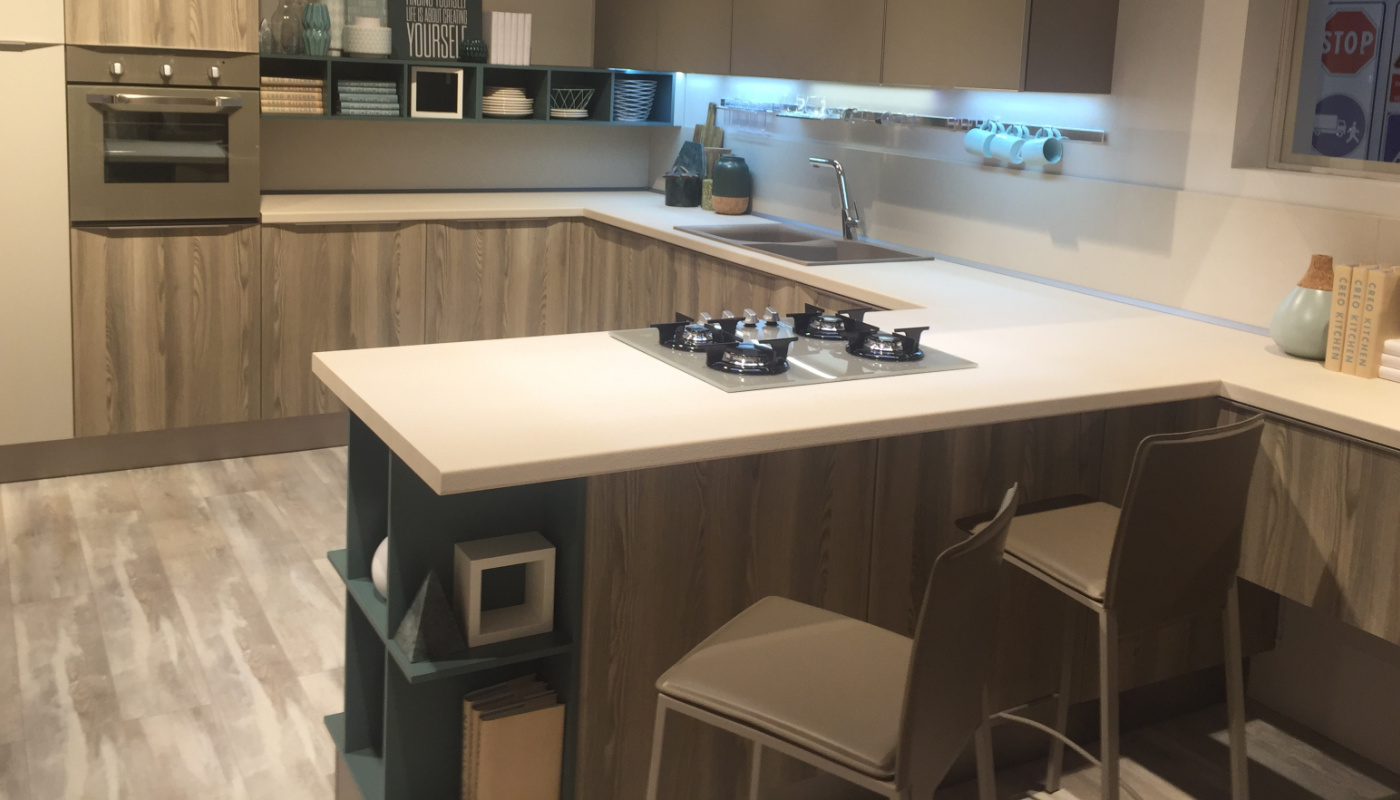
Functional Layouts
- Small Kitchens: In compact kitchens, opt for a narrower island (24 to 30 inches or 61 to 76 cm) to maximize space efficiency while maintaining functionality.
- Large Kitchens: In spacious kitchen island with cooktop, consider a deeper island (30 to 36 inches or 76 to 91 cm) to accommodate additional features such as sinks, cooktops, or secondary storage.
Customizing Depth for Specific Uses
- Food Preparation: For dedicated food preparation areas, a standard depth of 24 to 30 inches (61 to 76 cm) is ideal, providing ample workspace for chopping, mixing, and meal assembly.
- Dining and Seating: If incorporating seating at the island, allow for a deeper overhang (12 to 18 inches or 30 to 46 cm) to accommodate comfortable seating without encroaching on workspace.
Enhancing Aesthetics
- Materials and Finishes: Choose countertop materials and finishes that complement your kitchen’s overall design theme. Consider contrasting or coordinating colors to create visual interest.
- Lighting and Accessories: Install pendant lights above the island to enhance visibility and add a decorative element. Incorporate decorative accessories such as bar stools, decorative bowls, or plants to personalize the space.
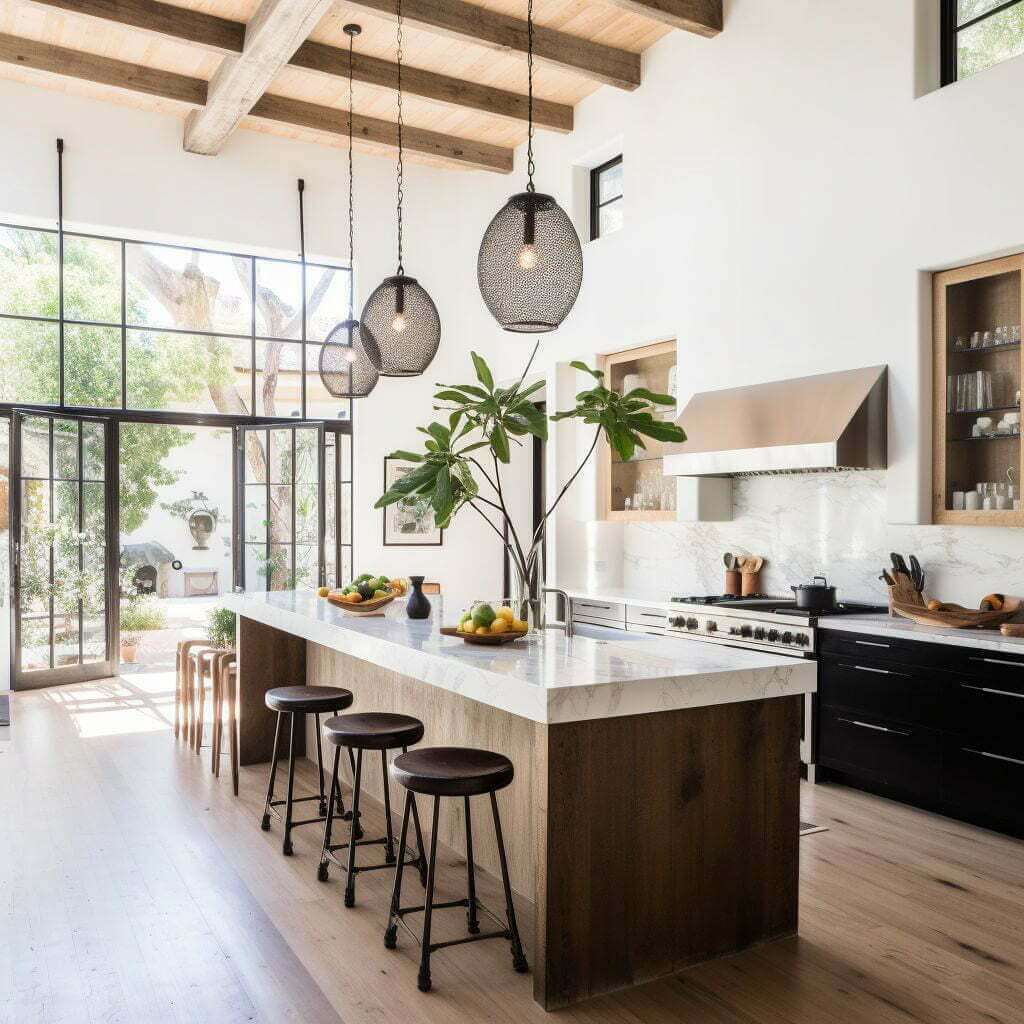
The role of Kitchen island
The kitchen island stands as a symbol of modern culinary spaces, offering not only additional workspace but also a multitude of functions that enhance efficiency, organization, and social interaction. As the heart of the kitchen, the island serves as a dynamic hub where culinary creativity flourishes, meals are prepared, and memories are made.
A Centerpiece of Culinary Creativity
- Preparation Zone: The primary function of a kitchen island is to provide ample workspace for food preparation. With its spacious countertop surface, the island becomes a dedicated zone for chopping, slicing, mixing, and assembling ingredients, allowing for seamless meal preparation.
- Efficient Workflow: By centralizing key components such as the sink, cooktop, and refrigerator within the island, chefs can optimize workflow and minimize unnecessary movement around the kitchen. This streamlined layout enhances efficiency and productivity during meal preparation.
Storage Solutions
- Cabinet and Drawer Space: Kitchen islands often feature built-in cabinets and drawers, offering valuable storage space for cookware, utensils, small appliances, and pantry items. This convenient storage solution keeps essentials within easy reach, reducing clutter on countertops and in other kitchen cabinets.
- Open Shelving: Some kitchen islands incorporate open shelving or display racks, providing a stylish showcase for cookbooks, decorative dishes, and culinary accessories. This functional and decorative feature adds personality to the kitchen island stove while offering quick access to frequently used items.
Casual Dining and Entertainment
- Breakfast Bar or Seating Area: Many kitchen islands are designed with an overhang or extended countertop, creating a built-in breakfast bar or seating area. This inviting space serves as a casual dining spot for quick meals, snacks, or morning coffee, fostering social interaction and family togetherness.
- Entertainment Hub: During gatherings and social events, the kitchen island transforms into a focal point for entertainment and mingling. Guests can gather around the island, chat with the chef, and enjoy appetizers and drinks while food is being prepared, creating a lively and convivial atmosphere.
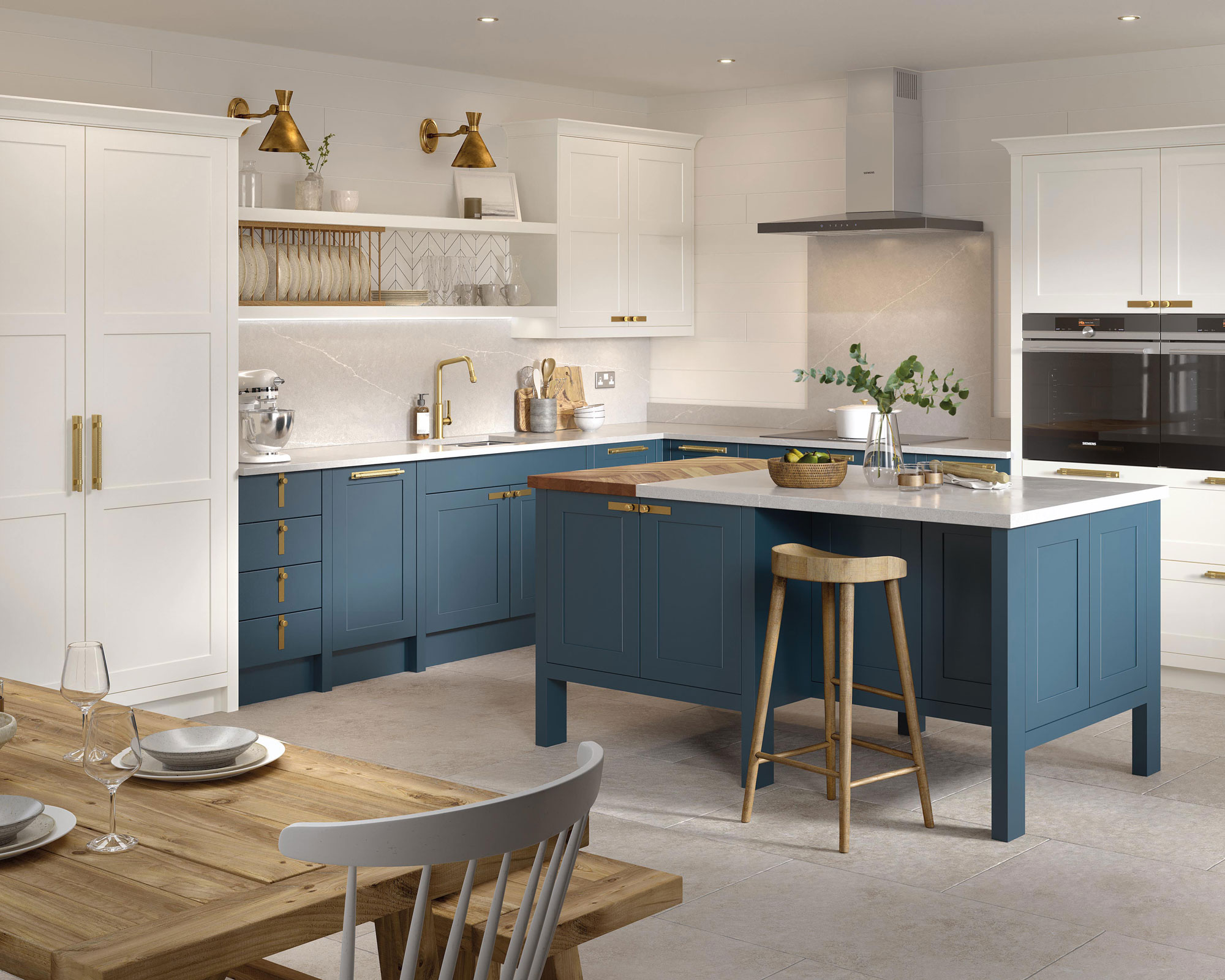
Multi-Functional Features
- Built-in Appliances: Kitchen islands can accommodate a variety of built-in appliances, such as sinks, dishwashers, cooktops, and wine coolers, expanding their functionality beyond basic food preparation. These integrated appliances streamline kitchen tasks and maximize space efficiency.
- Versatile Work Surface: Beyond food preparation, the kitchen island serves as a versatile work surface for a range of activities, including crafting, homework, and household management. Its durable and spacious countertop provides a stable platform for various tasks, accommodating different needs and preferences.
Design Integration and Aesthetic Appeal
- Architectural Element: In addition to its practical functions, the kitchen island serves as a prominent architectural element that anchors the kitchen design. Its size, shape, and materials contribute to the overall aesthetic of the space, reflecting the homeowner’s style and preferences.
- Customization Options: Kitchen islands come in a variety of styles, from sleek and contemporary to rustic and traditional, allowing for customization to suit individual tastes and design themes. Whether incorporating natural stone countertops, reclaimed wood accents, or modern fixtures, the island can be tailored to enhance the visual appeal of the kitchen.
The kitchen island is much more than a countertop—it’s a versatile and indispensable element that embodies the essence of modern kitchen design and lifestyle. From its role as a preparation zone to its function as a gathering space for dining and entertainment, the island enhances efficiency, organization.
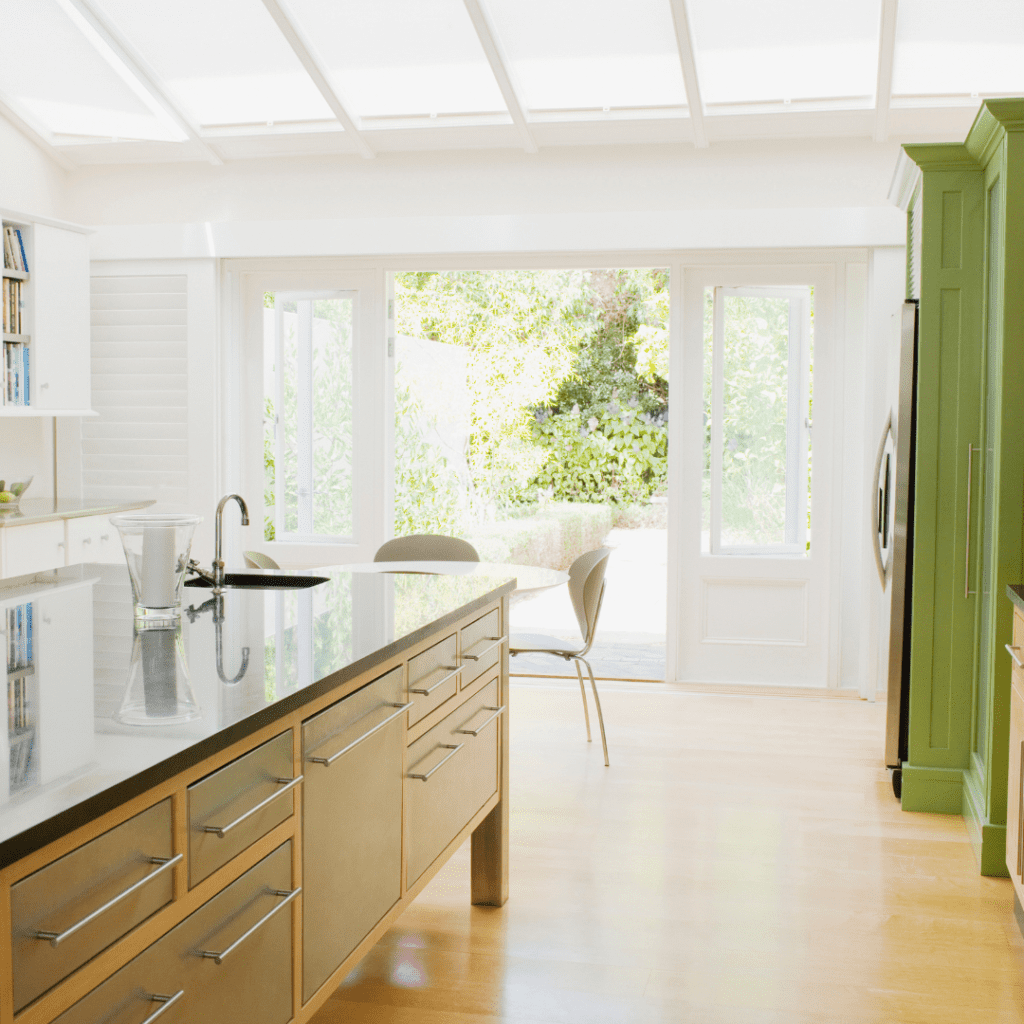
Conclusion
Designing and decorating a kitchen island involves thoughtful consideration of its depth to optimize functionality and aesthetics. By assessing your kitchen layout, determining intended uses, and customizing the island’s depth accordingly, you can create a stylish and efficient centerpiece that enhances the overall appeal and usability of your kitchen space.
